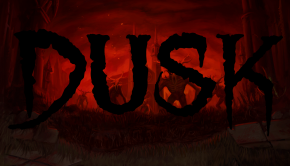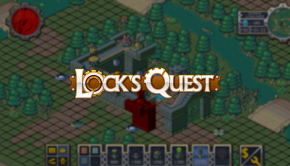Review – Stardew Valley
Cohen, aka The PC Gaming Guru, decided to share their thoughts on Stardew Valley! Follow them on twitter here.
If you’ve had fantasies about shoveling manure, milking cows, or interacting with strangely charming townsfolk, Stardew Valley might just be worth your time.
Stardew Valley is an indie title that has sought to bring the atmosphere and gameplay of the Harvest Moon series (and others like it) to the PC – without needing to use emulators or other third party tools. And it does so pretty darn successfully if you ask me!
Before I get too far into this review, let me quickly go over the genre these games belong to. Stardew Valley and the Harvest Moon games alike both fall into a mixture of the life simulation and farming simulation genres, due to both their emphasis on running a farm and building relationships with NPCs in the game.
Genre fans who play these games will usually focus on growing and watering crops as well as feeding livestock and gathering their produced goods (Eggs, milk, etc.). There is also usually a relationship system in the game that encourages players to interact with the townsfolk and meet their potential in-game spouse.
Having said that, Stardew Valley is far more than just a Harvest Moon clone. In fact, aside from the most basic gameplay elements (Farming and talking to people), the two games are vastly different!
The first major difference is the art direction and visuals. Harvest Moon games have been almost exclusively 3D in recent years, which often comes with a lot of drawbacks. Weird FPS issues as a result of porting the game over from Japanese systems, irritating camera angles, and various other annoyances have all been pretty frequent occurrences in the latest HM games.
Stardew Valley, on the other hand, shamelessly showcases a 16-bit art style with a lot of charm. It performs great on just about any system, while still allowing for a lot of artistic variety. Characters all look unique (With their own RPG-maker-like portraits during conversation), animals are adorable, and the buildings and objects all have an awful lot of personality.
Stardew Valley’s gameplay is surprisingly varied, and the developer’s commitment to putting out quality updates over time has benefited the game tremendously. While your daily tasks will usually consist of planting & watering crops, feeding any farm animals you own and completing simple quests for the townsfolk, there’s a lot more to do – and plenty of incentives and rewards to do it!
For example, players can actually grab a sword and delve into the caves, slaying monsters, looting chests, and mining rare ores along the way. Be careful, though – while there’s no permadeath in the game, running out of health in the mines will result in you losing a portion of your money, a few of your items, and “forgetting” the last few floors of the mine. Pretty harsh!
All of the materials dropped by monsters and gathered throughout your spelunking serves some purpose in the game – whether it be crafting new items or structures, or simply tossing them into a cooking recipe.
Yep, I said crafting. Stardew Valley sports a pretty robust crafting system, and it’s supported by the introduction of a skill system. You can craft everything from simple decorations (Such as cobblestone paths) to fences, scarecrows, and actual farm equipment. What exactly you can craft at any given time is determined by your skills in various areas – foraging, woodcutting, mining, farming, combat and more.
Performing actions related to these categories will give you a certain amount of XP in them at the end of the day. It’s a pretty neat system that gives you a real sense of progression over time.
Aside from slashing monsters to bits and tending to your farm, Stardew Valley offers several other fun activities. You can fish (Either for food to regenerate energy, to sell, or to give as a gift to a special someone), purchase hats and other costume pieces to customize your character, and – as briefly mentioned above – even complete miscellaneous quests for the townspeople, such as bringing them fish, crops, or other goods. The rewards for these quests are typically minimal (Usually just a moderate amount of money) but a few can give you a nice relationship boost with various townspeople.
You can also collect bundles for the decrepit Community Center, a once bustling location that the townsfolk would gather in. Collecting these bundles will allow you to eventually return the Community Center to its former glory. These bundles cover everything from seasonal crop bundles to fishing bundles and foraging bundles (Similar to the seasonal weeds and flowers you’d find in Harvest Moon). You also get individual rewards for doing so, so there’s always an incentive for you to spend some time
As with Harvest Moon, seasons and festivals are a large part of the game. Seasons affect everything from the aesthetic of the game to which crops you can grow. Festivals also occur, usually once a month. These are usually dances, potlucks, or other more cinematic events like the dance of the moonlight jellies. These festivals give you opportunities to chat with townsfolk, take part in fun minigames (To win festival-specific rewards), and hang out with your significant other.
Speaking of significant others, Stardew Valley has romance/marriage mechanics that work pretty similarly to Harvest Moon’s. There are 12 romanceable characters in the game, each with their own schedules, likes, dislikes, and personalities.
As you talk to these characters, give them gifts and interact with them during festivals, the amount of “hearts” (Essentially a gauge of how good your relationship is with them) you have with them will increase.
Once you reach 8 hearts, you can give them a bouquet, after which you’re only 2 hearts away from proposing! Once you’ve proposed, you’ll get a cute cutscene in which you exchange vows, and then your spouse will move in with you at the farm. By the way, same-sex relationships are a thing, so pick whoever you like!
Unlike in Harvest Moon, marriage actually has some tangible gameplay benefits (Aside from being in looove) in Stardew Valley. Your spouse may water all the crops on the farm, feed all of the farm animals, and even repair broken fences. They can also cook breakfast and dinner for you, should you ask.
The final thing to mention about the relationships is the fact that you and your spouse can have children. They offer no gameplay benefits whatsoever, and really only grow to the toddler stage, but it’s still a fun little mechanic that many people felt was missing from the initial release. If you happen to be in a same-sex relationship, your spouse may suggest the idea of adoption.
Honestly, Stardew Valley has so many goods things going for it that I find it difficult to think of anything particularly negative to say about it. But, of course, no game is perfect – and Stardew Valley is no exception, no matter how much I’d like it to be.
So let’s get into a few of the things I don’t care for in the game.
The combat in Stardew Valley is pretty darn clunky, and it can get a bit repetitive when you realize monsters don’t really require any special tactics or equipment to defeat. This ain’t no Witcher 3, folks. Encounters typically amount to you cornering the enemy and spamming the attack button until it’s dead. And while weapons do have “alt-fire”, they are either entirely useless (Like blocking) or too slow to be useful more than a handful of times (a heavy ground slam).
Second, the children, as stated above, are pretty boring and void of personality. In Harvest Moon, your children’s behavior, future vocation and even the friends they make are governed by how you raised them. In Stardew Valley, they grow to the toddler stage and just run around the house – that’s about it.
The final thing that irks me about the game is the fishing mini-game. Some people love it, others hate it, and I happen to fall into the latter category. Essentially you have to hold your left mouse button to keep a green bar lined up with the symbol of a fish, which rapidly moves up and down depending on the species of fish you’ve hooked.
This mini-game ranges from pathetically easy to ridiculously hard, and it can take you in-game days (Sleeping in between, of course) and a ton of wasted energy to catch a single difficult fish – not to mention the fact that certain fish only appear during certain seasons and weather conditions. This can make completing certain fishing-related Community Center bundles pretty frustrating, especially if you miss your chance to catch them during your first year in the game.
All in all, though, Stardew Valley is a phenomenal game and a very welcome addition to the farming/lifestyle simulation genre. At only $15, it’s really tough to beat the crazy amount of content available in the game.
While it has a few problems and shortcomings here and there, the developer (ConcernedApe) is one of the most active I’ve seen in an indie game – period. He’s worked tirelessly since release to put out quality bug fixing patches and extensive content updates at no additional cost to players. Anyone who jumps aboard the Stardew Valley bandwagon now gets to benefit from months and months of his hard work since release.
In other words, stop reading this review and start playing!
Interested in submitting content to our website? Check our contribute page out.










